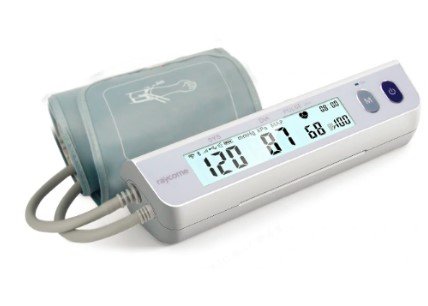The Role of Chinese Manufacturers in the Production of Medical Devices
Summary
- Chinese manufacturers play a significant role in the production of medical devices, including Phlebotomy Equipment.
- Some Chinese manufacturers support the 510(k) submissions process for phlebotomy devices, while others may not be involved in this process.
- It is crucial for medical labs in the United States to carefully assess the quality and regulatory compliance of phlebotomy devices manufactured in China before incorporating them into their operations.
The Role of Chinese Manufacturers in the Medical Device Industry
Chinese manufacturers have become major players in the global medical device industry, producing a wide range of equipment, including phlebotomy devices, that are used in healthcare settings around the world. The lower cost of production in China has made it an attractive location for manufacturing medical devices, leading to an increase in the number of Chinese manufacturers supplying products to markets such as the United States.
Benefits of Working with Chinese Manufacturers
Working with Chinese manufacturers can offer several benefits to medical labs in the United States, including:
- Cost-effectiveness: Chinese manufacturers often offer competitive pricing for medical devices, allowing labs to save on procurement costs.
- Diverse product range: Chinese manufacturers produce a wide range of phlebotomy devices, giving labs access to a variety of options to suit their specific needs.
- Efficient Supply Chain: China's well-established manufacturing infrastructure ensures timely delivery of products to medical labs in the United States, helping to maintain continuity in operations.
Regulatory Considerations for Phlebotomy Devices
Medical labs in the United States are required to comply with regulatory standards set by the Food and Drug Administration (FDA) when using phlebotomy devices in their operations. The 510(k) submissions process is a crucial step in gaining FDA approval for new medical devices, including Phlebotomy Equipment. This process involves demonstrating that a new device is substantially equivalent to a legally marketed device that is already approved by the FDA.
Dealing with Chinese Manufacturers for Phlebotomy Devices
When working with Chinese manufacturers for phlebotomy devices, medical labs in the United States need to consider the following factors:
Quality Assurance
Ensuring the quality of phlebotomy devices is essential to the smooth functioning of medical labs. Chinese manufacturers must adhere to stringent Quality Control measures to meet the regulatory standards set by the FDA. Medical labs should conduct thorough quality checks on phlebotomy devices manufactured in China to ensure they meet the necessary standards.
510(k) Submissions Support
Some Chinese manufacturers may support the 510(k) submissions process for phlebotomy devices by providing the required documentation and assisting with regulatory compliance. Medical labs should seek out manufacturers who are experienced in navigating the FDA approval process and can provide the necessary support for 510(k) submissions.
Communication and Collaboration
Clear communication and collaboration with Chinese manufacturers are essential for ensuring that phlebotomy devices meet the specific requirements of medical labs in the United States. Building strong relationships with manufacturers can help labs address any issues that may arise during the procurement and implementation of phlebotomy devices.
Challenges and Considerations
While working with Chinese manufacturers for phlebotomy devices can offer numerous benefits, there are also challenges and considerations for medical labs to keep in mind:
Language and Cultural Differences
Language barriers and cultural differences can sometimes create challenges in communication between medical labs in the United States and Chinese manufacturers. It is essential to establish clear channels of communication and ensure that there is a mutual understanding of expectations and requirements.
Regulatory Compliance
Ensuring regulatory compliance is a critical aspect of working with Chinese manufacturers for phlebotomy devices. Medical labs should conduct thorough due diligence to verify that manufacturers meet the necessary regulatory standards and guidelines set by the FDA.
Quality Control and Product Testing
Medical labs should implement robust Quality Control measures and product testing protocols to verify the quality and performance of phlebotomy devices manufactured in China. Regular inspections and audits can help ensure that devices meet the required specifications and standards.
Conclusion
Chinese manufacturers play a significant role in the production of phlebotomy devices used in medical labs in the United States. While some manufacturers may support the 510(k) submissions process for these devices, it is crucial for labs to conduct thorough due diligence to ensure regulatory compliance and quality assurance. By establishing clear communication channels, building strong relationships, and implementing robust Quality Control measures, medical labs can effectively collaborate with Chinese manufacturers to procure high-quality phlebotomy devices for their operations.

Disclaimer: The content provided on this blog is for informational purposes only, reflecting the personal opinions and insights of the author(s) on the topics. The information provided should not be used for diagnosing or treating a health problem or disease, and those seeking personal medical advice should consult with a licensed physician. Always seek the advice of your doctor or other qualified health provider regarding a medical condition. Never disregard professional medical advice or delay in seeking it because of something you have read on this website. If you think you may have a medical emergency, call 911 or go to the nearest emergency room immediately. No physician-patient relationship is created by this web site or its use. No contributors to this web site make any representations, express or implied, with respect to the information provided herein or to its use. While we strive to share accurate and up-to-date information, we cannot guarantee the completeness, reliability, or accuracy of the content. The blog may also include links to external websites and resources for the convenience of our readers. Please note that linking to other sites does not imply endorsement of their content, practices, or services by us. Readers should use their discretion and judgment while exploring any external links and resources mentioned on this blog.
